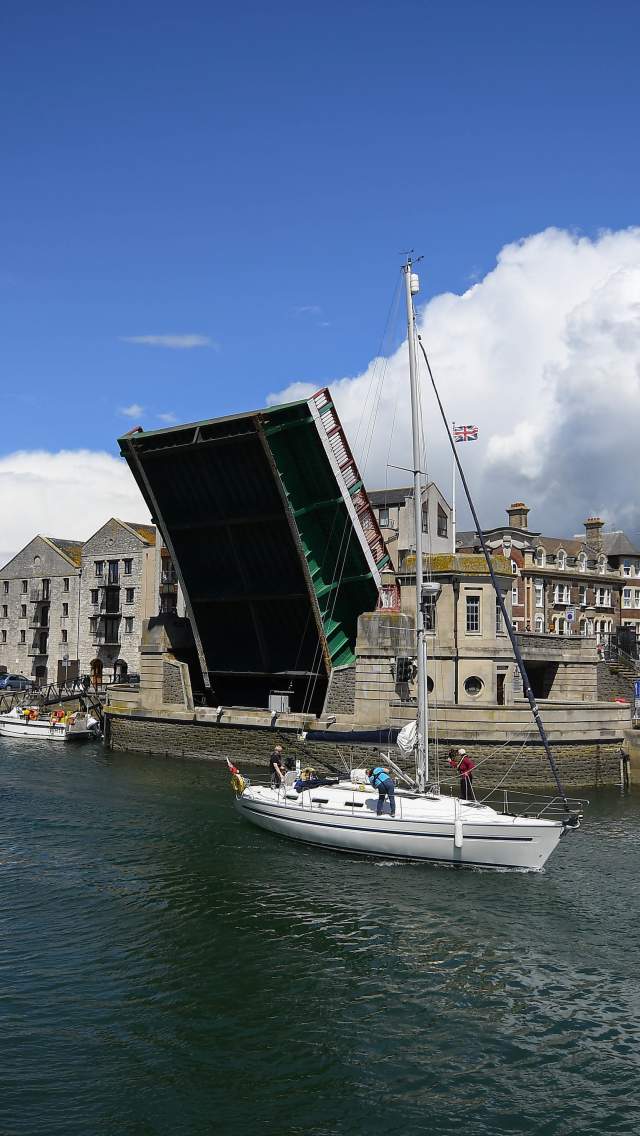Weymouth Heritage Trail
In 1571, during the reign of Elizabeth I, the towns of Weymouth and Melcombe Regis, on either side of the River Wey, were united into a single borough.
We Are Weymouth have created the Weymouth Heritage Trail so that you can discover some of the town’s fascinating history including the arrival of the Black Death, its importance as a Georgian resort and its involvement in the D-Day invasion.
This trail is a 1.4 miles (2.3km) accessible walking route along the beach and harbour. Along the way there are 16 memorable locations to stop at and three museums you might like to visit.
Weymouth Museums
Tudor House Museum at point 15 is an early 17th Century building is one of the UK’s best preserved Tudor buildings.
Weymouth Museum at point 16 is currently undergoing renovation. There is a pop-up museum located at 40b St Thomas Street near the Town Bridge during the renovation work.
The Nothe Fort near to point 16 is a multi-award winning visitor attraction that brilliantly tells the story of our coastal defences.
Trail Locations
Along the Trail, We Are Weymouth have commissioned some very special ceramic plaques. These tell the stories of twelve of the town’s most important locations. Look out for them at stops along the Trail.
You can download a Weymouth Heritage Trail leaflet to print at home and bring with you or use an interactive online map by scrolling down this page.
1. Jubilee Clock. Built by public subscription and unveiled in October 1888 to commemorate Queen Victoria’s 1887 Golden Jubilee.
2. King’s Statue and Bathing Machine. King George III first visited Weymouth in 1789, when doctors recommended sea-bathing as a cure for his ailments. Plaque location.
3. Esplanade. Look back past the arc of the great Georgian and Regency terraces to the White Horse on the distant Osmington Hill.
4. Clark and Endicott Memorial. Commemorates the embarkations of explorer Richard Clark and of puritan John Endicott who became the first Governor of Massachusetts.
5. Ferry Steps. In June 1944 troops of the US 1st Division set off from here for Omaha Beach as part of the D-Day invasion. Plaque location.
6. Custom House. Built as a merchant’s house around 1800 and bearing the Royal Arms over its doorway from its later use as the Custom House. Plaque location.
7. Black Death Plaque. The bubonic plague or “Black Death” is reputed to have entered England through Melcombe Regis (which used to be a separate town to Weymouth) in the summer of 1348.
8. Maiden Street Cannonball. The Royalist cannonball high in the wall was fired from the Nothe headland in 1645 during the Civil War. Plaque location.
9. St Mary’s Church. Built in 1817, this church with its simple cupola contains Sir James Thornhill’s splendid painting of “The Last Supper”. Plaque location.
10. Town Bridge. Opened by the Duke of York in 1930, it’s the sixth bridge to link Weymouth and Melcombe Regis since their union in 1571. Plaque location.
11. Old Town Hall. Originally three Tudor cottages but substantially rebuilt in 1774 and 1896. Now a venue for community events. Plaque location.
12. Holy Trinity Church. Built 1834-36 of Portland stone. Extended by Crickmays in the 1880s when the Chapelhay Steps were built. Plaque location.
13. Ralph Allen’s House. The summer residence from 1750-63 of the Bath stone entrepreneur credited with making Weymouth fashionable. Plaque location.
14. Town Pump and Old Rooms. The stone pump originally erected on North Quay in 1775 now stands in front of the late Georgian Old Rooms Inn. Plaque location on the side of the Old Rooms Inn in Trinity Street.
15. Tudor House. This merchant’s house was built around 1600 and beautifully restored in 1961. It is now the home of a small museum. Plaque location.
16. Brewers Quay. The old Groves and Devenish breweries are situated in the historic Hope Square where you will find a range of great venues for refreshment at the end of your walk.
Plan Your Visit
You may also like...
Eating out
Fresh local seafood, award winning fish and chips and flavours for all tastes.
Weymouth Sculpture Trail
Seek out six artworks recently installed around Weymouth and discover more about the town's history.
Weymouth’s waterside history
Discover how Weymouth’s history has been shaped by the different waters around it.
2 Days in Weymouth & Portland
A 48 hour suggested itinerary, prefect for a short break to coastal Dorset.






